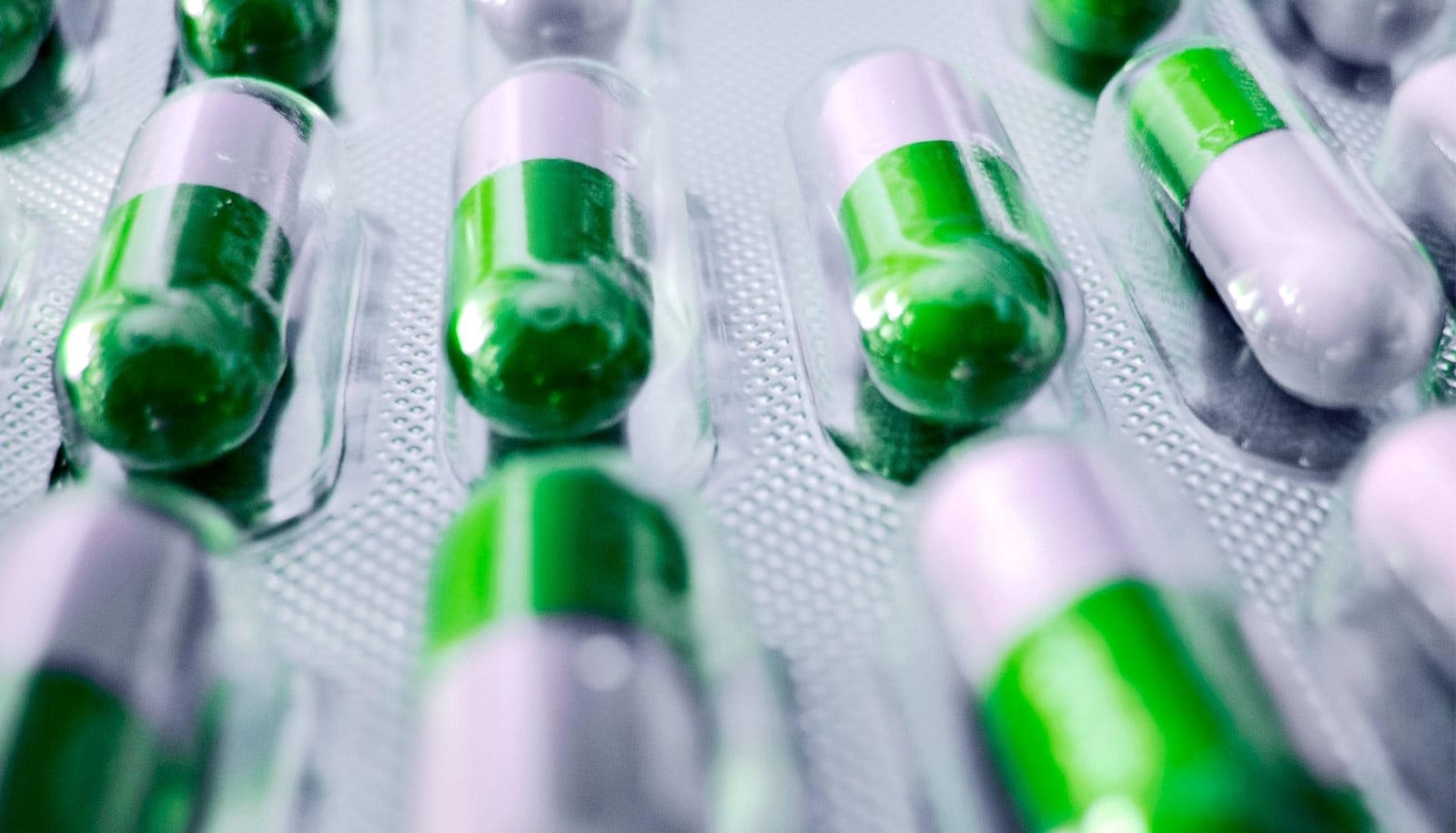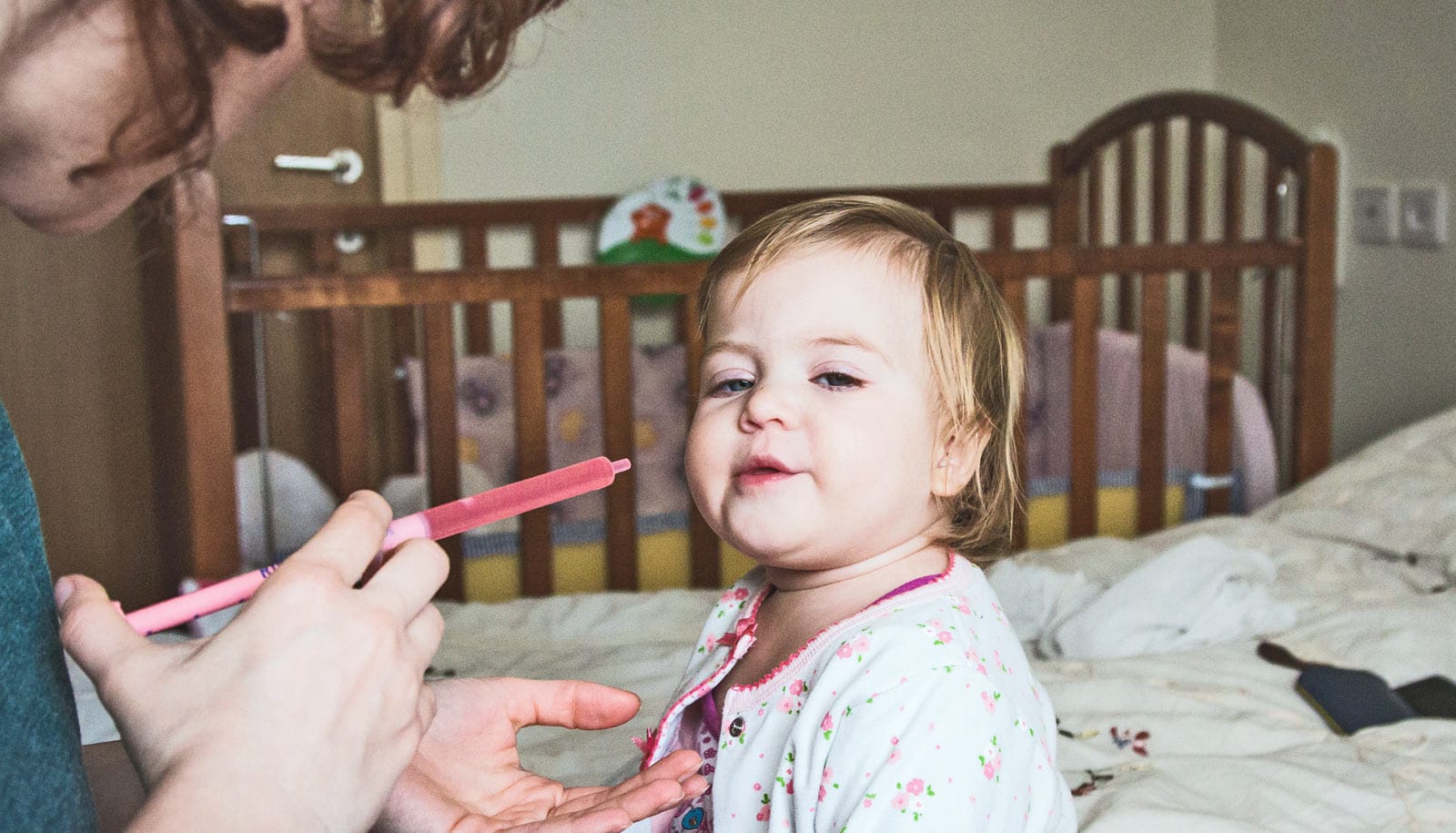
"We are hoping that pediatricians will pause before starting PPIs knowing that there is an increased risk of infections while their patients are on this drug." (Credit: Getty Images )
Proton pump inhibitors for babies up infection risk
New research on proton pump inhibitors for babies finds that "being exposed to these drug levels actually puts the child at risk for having an extra infection event."

The use of proton pump inhibitors among children is on the rise and so are potential side effects, according to a new study.
Proton pump inhibitors (PPIs)—such as Prilosec, Protonix, and Nexium—have long been among the most prescribed medications in the country to help reduce stomach acid.
The study examined DNA from patients up to three years old at the time of PPI exposure.
“PPIs are commonly used in children to treat gastrointestinal disorders, and we are seeing an increase in the number of adverse infection events associated with their use,” says Sara Van Driest, assistant professor of Pediatrics at Monroe Carell Jr. Children’s Hospital at Vanderbilt University, the principal investigator of the study.
“Because these medications are available over the counter for adults, they are thought to be a safe option for children. These medicines are seen as very low risk with few downsides. But what we have found is that PPIs aren’t without risk,” she says.
Breaking down proton pump inhibitors
According to Van Driest, there is a specific enzyme in the body, CYP2C19, that helps break down these medications. The enzyme works differently in each person—slow, normal, fast, or sometimes not at all—impacting the ability of the medication to be safely metabolized.
Because CYP2C19 inactivates PPIs, genetic variants that decrease the enzyme’s function may increase the medicine levels in the body leading to more infection events. Stomach acid naturally protects the body from dangerous organisms that can be found in water and food. Reducing stomach acid may increase an infant’s risk of these kinds of infections.
The study included PPI-exposed infants, both healthy and those with chronic health conditions, with varying levels of enzyme function. In all, the researchers included 670 using BioVU samples, a biorepository of DNA extracted from discarded blood collected during routine clinical testing.
The team hopes its findings will help clinicians make the best decisions on prescribing PPIs in children.
“The fact that children who have been characterized as normal CYP2C19 metabolizers actually had more infection events than the fast metabolizers tells us that being exposed to these drug levels actually puts the child at risk for having an extra infection event,” Van Driest says.
“We were able to highlight that these medicines do have side effects, and as clinicians we need to think very carefully about the benefits and the risks. We can consider doing a genetic test to identify if a patient is a slow, normal, or fast metabolizer.”
Pause before giving PPIs
Genetic testing can be a useful tool to determine if a patient requires a lower or higher dose of the drug. Since people metabolize drugs differently, these different drug responses increasingly are associated with different common genetic variants.
The study findings add to the growing evidence that CYP2C19’s impact on PPIs warrants extra consideration when prescribing.
“We are hoping that pediatricians will pause before starting PPIs knowing that there is an increased risk of infections while their patients are on this drug,” says Van Driest. “If there is a need to start the drug, they can consider genetic testing to find out their patient’s CYP2C19 status.”
The research appears in Pediatrics. Additional researchers from Vanderbilt and the Nemours Children’s Health System in Florida contributed to the work.
Source: Vanderbilt University
The post Proton pump inhibitors for babies up infection risk appeared first on Futurity.
Share this article:
This article uses material from the Futurity article, and is licenced under a CC BY-SA 4.0 International License. Images, videos and audio are available under their respective licenses.
Related Articles:
Blame gut bacteria for certain side effects
Feb. 11, 2019 • futurityDo antibiotics in early life increase IBD risk later?
July 29, 2020 • futurityLinks/images:
- https://www.futurity.org/infants-fever-infection-2178822/
- https://www.futurity.org/side-effects-gut-bacteria-1978722/
- https://doi.org/10.1542/peds.2019-0857
- http://news.vumc.org/2019/11/06/study-finds-acid-reducers-may-pose-risk-for-children/
- https://www.futurity.org/proton-pump-inhibitors-for-babies-2204722/
- https://www.futurity.org


